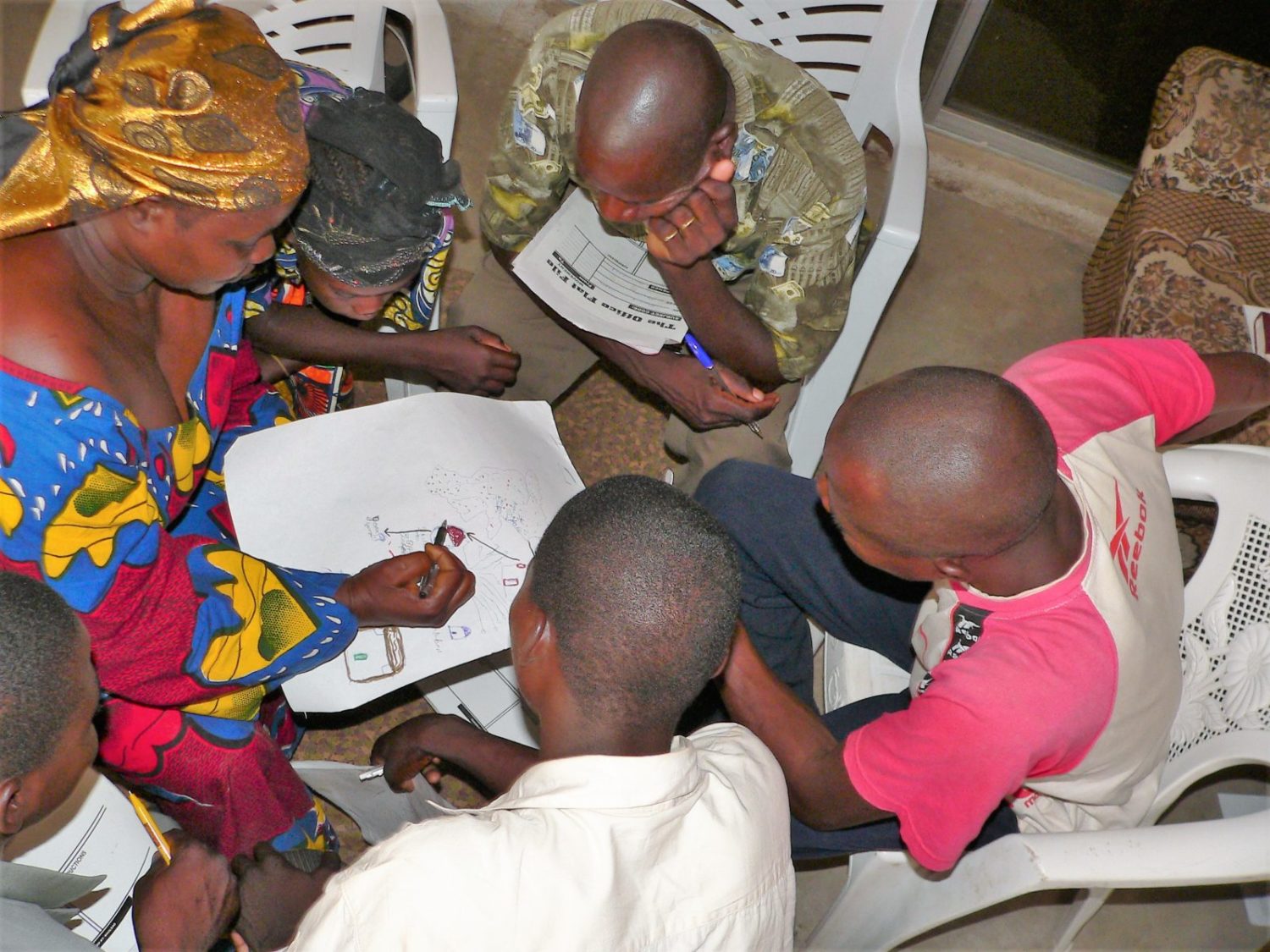“How is your new disciple doing?” I asked. “Last week you said *Ram Bahadur took a step to follow Jesus and was baptized. That was so great to hear!” With disappointment, *Ashok told me this new person had moved away. He had found work in another area. It was unclear, but he would likely not return for a year or so.
It can be difficult to make disciples who make disciples when the people you are focused on are constantly moving. Whether they are seeking work or moving for other reasons!
For the past several months I have been writing about key barriers to launching a Disciple Making Movement (DMM). See the full list here. Trying to make disciple-makers among a nomadic people group can feel impossible. It can seem like a major blockade to the movement’s growth.
Obstacle Or Catalyst?
This doesn’t need to be a barrier, however, to starting a DMM. It can instead become a major cause of movement expansion.
The key is to disciple the new believers rapidly using simple, reproducible approaches. Then, teach them to train others and start groups wherever they go. This was the model that led to much growth in the New Testament.
“On that day a great persecution broke out against the church in Jerusalem, and all except the apostles were scattered throughout Judea and Samaria.” Acts 8:1 NIV
Scripture Guides Us
Always look to scripture for foundational answers to the DMM problems you encounter. This problem of believers scattering was very present in the book of Acts!
The cause of the believers constantly moving was persecution, not searching for work. There are great parallels to learn from, however.
We read in the eighth chapter of the book of Acts how persecution caused many of the believers to move away from Jerusalem. The growing church was still in its early stages of development. Many had not received much training yet. Most had only been following Jesus for less than a year.
Interestingly, it says in Acts 8:4, “Those who had been scattered preached the word wherever they went.”
How was it possible that they were equipped enough (in such a short amount of time) to preach the gospel effectively? They were able to start new groups (churches) in so many new locations as they scattered!
How Scattering Believers Became Church Planters
1) They powerfully received the Holy Spirit (Acts 2:4, Acts 8:15).
This is an important reason. Those who came to faith received the power of the Holy Spirit and developed a relationship with Him. They used their spiritual gifts and learned to listen to the Spirit’s voice. When no mentor was present, the Holy Spirit was there to correct, guide and instruct them.
The apostles trusted the Holy Spirit in the new disciples’ lives. They encouraged them to obey His leading. That doesn’t mean they never brought correction or instruction to them. They did! But their default mode was the empowerment of local believers, not control and restriction.
Be sure to pray for new believers to receive the Holy Spirit.
2) They met daily for fellowship and discipleship (Acts 2:46).
Daily discipleship of new believers is key to developing them into disciple-makers. In the short-term discipleship phase, much contact is necessary. They are still new babes in Christ.
Meet as often as possible with those coming to faith. This is especially needed the first few weeks after they believe.
Training them quickly in the basics of what it means to follow Jesus will bear much fruit. Make sure they are encouraged to immediately begin sharing their testimony with others.
Using the T4T “Baby Lessons” can be a good way to do this. Train them until they can train others. Then if they disperse, they will pass on what they have learned from you.
3) They learned the stories of Jesus well enough to reproduce them (Acts 2:42).
It takes many years to train a new disciple to the point where they can preach an expository sermon. Do you still think hearing a weekly sermon is what it means to be a church? I hope not!
If that is what you need, new believers on the move will probably not end up being church planters!
Instead, using a storytelling or Discovery Bible Study (DBS) approach works much better. As we practice and repeat the stories of scripture, it becomes natural to tell them to others.
In the book of Acts, when the believers gathered, the apostles told stories of Jesus’ life. They were first-hand witnesses. They shared about His miracles, His parables, and what it was like to be with Him. Then, those stories were passed on to others following an oral tradition. We can do the same today!
4) Though there was a council of elders, they practiced the priesthood of all believers (1 Pet. 2:9).
The New Testament church was not without leadership. But the structure was different from what is typical in churches today. There was no part of the Great Commission that the leaders reserved only for themselves.
Jesus’ gave some basic commands. He told us to make disciples of all nations, to baptize them, practice the Lord’s Supper often, give to those in need, love God and our neighbor, etc.
In the New Testament church, these were the responsibility of every Jesus follower. They were not only for the apostles or leaders. Spiritual hierarchy and the professional clergy came much later. This slowed the growth of the church.
As you train disciples immediately empower them to be disciple-makers. Help them to start new groups themselves rather than just adding to existing groups. Then, when they have to move for work, they will naturally do this in the new places where they go. Your movement will expand into regions you never dreamed of reaching.
5) Churches mostly met in homes (Acts 16:40, Acts 2:46, Acts 21:8,16).
In the New Testament church, they didn’t suffer from the same misconception of what the church was. They knew the church was people, not a building.
As you disciple new believers, be sure to instill this New Testament understanding in them.
6) The apostles visited and wrote to them (Acts 8:14, Rom. 15:23,28).
New Jesus followers, empowered by the Holy Spirit, did share the gospel and start new churches. But they were not without input and care.
The apostles visited them as often as they were able to. They sent letters to encourage (as well as correct them) in areas of church practice and doctrine.
When people you’ve led to faith scatter, stay in touch with them. Call, message and visit them. As they lead others to Christ, do what you can to help them stay on track.
Today we have the ease of text messaging, phone calls and many means of ongoing discipleship. Consider those moving to new places church planters rather than as people who have left your church. Keep investing. The result might be multiplication rather than a loss for the movement.
Multiplication Through Migration?
The example is clear in the book of Acts. When the believers scattered, the result was movement multiplication. Could the same thing happen when people you’ve led to faith move on to new places?
I’d love to hear your stories or struggles around this issue! Please share in the comments below or on the Facebook page. Looking for more interaction and input? Join the Facebook DMM group.
*names are changed.
Oral Culture Baby Lessons

Sign up to learn how to use the Oral Culture friendly Baby Lesson set for short term discipleship.



